GIGABYTE GB-BXi7H-5500 Broadwell BRIX Review
by Ganesh T S on January 29, 2015 7:00 AM ESTGaming Benchmarks
Intel's integrated GPUs don't have a big name in the gaming community. Once in a while, Intel throws in a surprise. In the Haswell family, CPUs with Iris Pro graphics gave a pleasant surprise to casual gamers. In this section, we will identify whether the Intel HD Graphics 5500 in the Core i7-5500U can provide an acceptable gaming experience.
For the purpose of benchmarking, we chose four different games (Sleeping Dogs, Tomb Raider, Bioshock Infinite and DiRT Showdown) at three different quality levels. As someone focusing on HTPCs and multimedia aspects, I rarely get to process gaming benchmarks, even while evaluating GPUs. One of the aspects that I feared was spending lot of time in installing the same games again and again on different PCs under the review scanner. The solution was to go the Steam route. Unfortunately, Steam also likes to keep the game files updated. A quick online search revealed that Steam could make use of an external drive for storing the game executables and downloadable content. With the Steam drive on-the-go use-case being read-heavy, the Corsair Flash Voyager GS USB 3.0 128GB Flash Drive (with read speeds of up to 275 MBps) was ideal for use as a portable Steam drive.
Sleeping Dogs
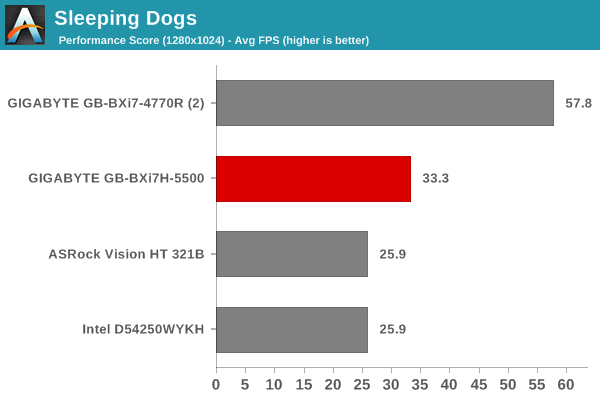


Tomb Raider
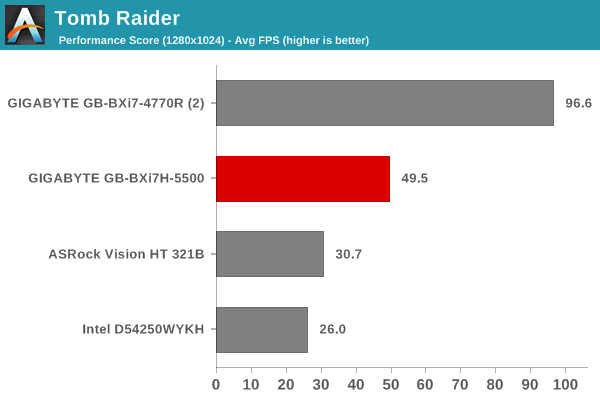
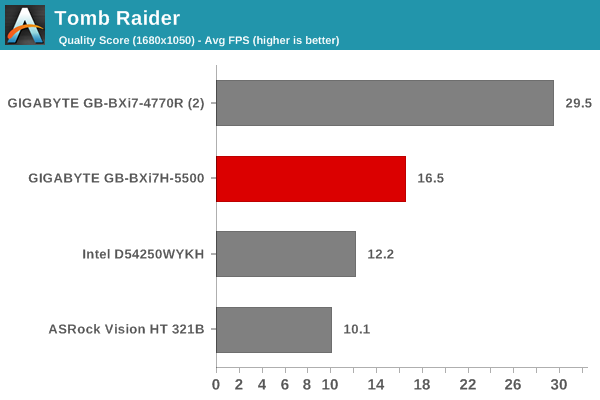
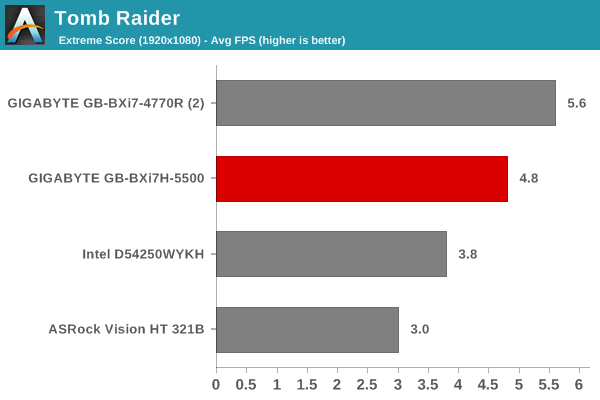
Bioshock Infinite
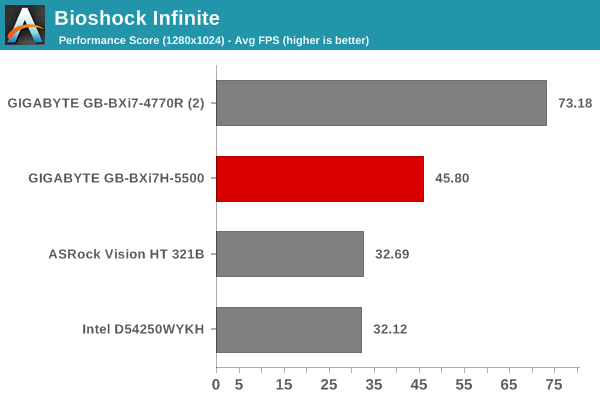
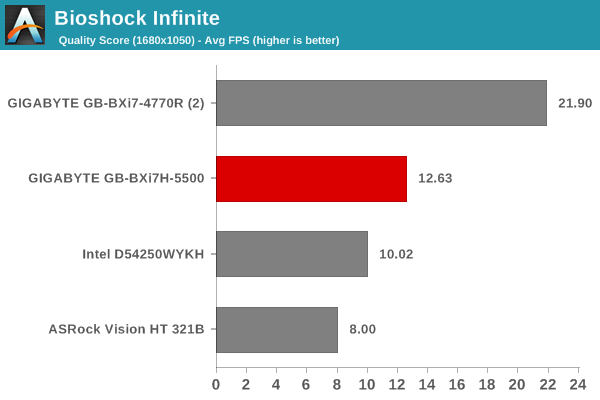
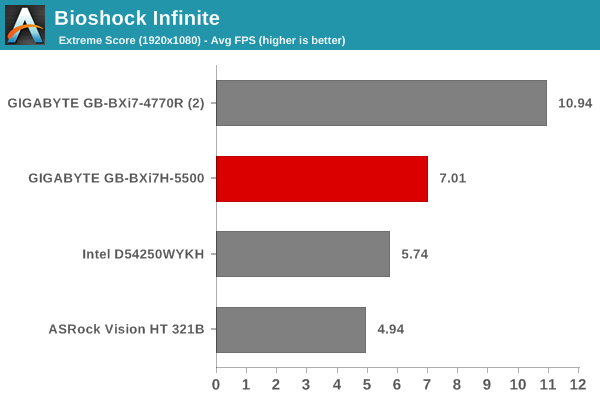
Tomb Raider
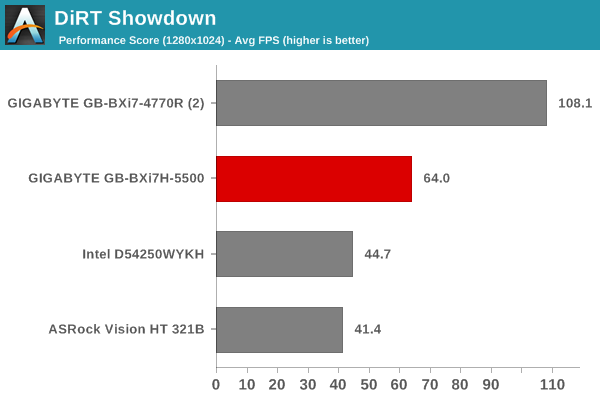
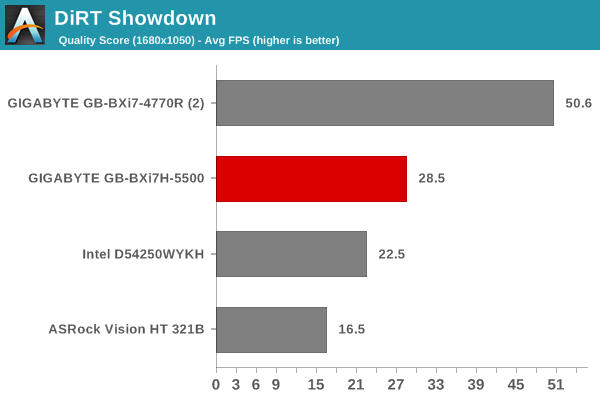
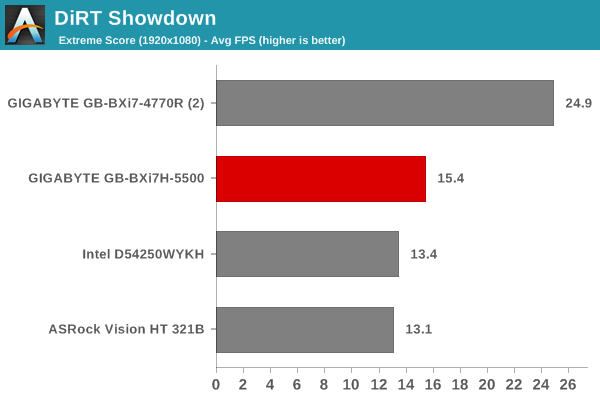
All the gaming benchmarks show a clear trend - users are getting better and better gaming performance with each successive generation of Intel GPUs. The Iris Pro-equipped systems still lead the pack by quite a distance, but, the power consumption profile is quite different. For the considered games, the GB-BXi7H-5500 can provde 30+ fps only in the lowest quality settings. These results are not entirely unexpected for Broadwell GT2. Systems based on Broadwell GT3e graphics (Iris Pro) are going to be the ones targeting the gaming community.










53 Comments
View All Comments
voicequal - Saturday, February 7, 2015 - link
The frequency and temperature characteristics are the most interesting and uniquely Anandtech parts of these reviews. Please keep up the good work.I'm puzzled as to how a CPU with a base clock specification of 2.4 GHz can drop to 1.6 GHz during the CPU+GPU loading test? Doesn't that make the base clock effectively 1.6 GHz at the given TDP of 15W?
It's disconcerting that the GPU can steal power from the CPU, and yet this doesn't show up anywhere on the spec sheet but is continually exposed by these reviews.
xchaotic - Monday, February 16, 2015 - link
Actually for the most obvious scenarios I can think of - gaming and other GPU accelerated tasks, I think it's better to give GPU priority, but I think there should be a software option to control how this works, along with other power saving features like idle timers...I can think of scenarios where both the CPU and GPU are loaded and the CPU should be given priority...
BtotheT - Monday, March 30, 2015 - link
I'm thinking the next big leap for Brix will be the Skylake H series processors(Q4'15-Q2'16). The Broadwell model here was a dual core, with non edram graphics(HD5500 series no less, Broadwell's low end) , you can't expect it to keep up with a quad core with edram the 4770R had.